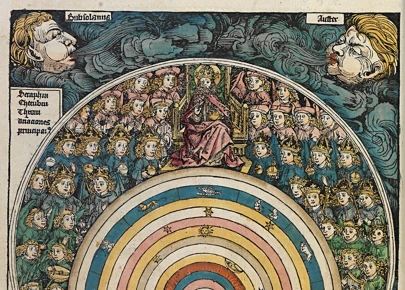Astrology and alchemy have captivated the human imagination for centuries, and their influence on the Renaissance period is particularly fascinating. This was a time of great intellectual and artistic exploration, where the connection between the celestial and the earthly was believed to hold the key to understanding the mysteries of the universe. In this article, we will delve into the intertwined worlds of astrology and alchemy, exploring their historical contexts, shared philosophical foundations, interconnected practices, and their influence on various artistic mediums. Join us on this journey as we uncover the intricate relationship between these ancient practices and the Renaissance era, and discover how they continue to shape our understanding of the world today.
Astrology and Alchemy: A Historical Overview
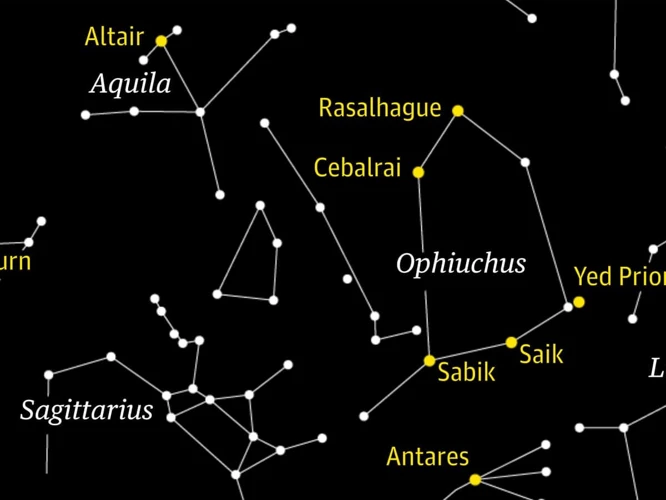
Astrology and alchemy flourished during the Renaissance, drawing inspiration from ancient civilizations’ starlore and the impact of celestial observations on ancient navigation. These disciplines were deeply intertwined, with both seeking to uncover the hidden connections between the cosmos and the human experience. Astrology, rooted in the belief that the positions and movements of celestial bodies influence human behavior and events, was seen as a means to gain insight into individuals’ personalities and predict future outcomes. Alchemy, on the other hand, was a mystical and proto-scientific practice that aimed to transform base metals into precious ones and discover the Philosopher’s Stone, a substance believed to grant immortality. Together, these esoteric disciplines captured the imagination of Renaissance thinkers, who saw them as a key to unlocking the secrets of the universe and enhancing their understanding of the natural world. The origins of astrological symbols can be traced back to ancient civilizations, such as the Mesopotamians and Egyptians, who assigned specific meanings to the celestial bodies. The intricate relationship between astrology and alchemy laid the foundation for the emergence of a new philosophical worldview in the Renaissance.
1.1 Astrology in the Renaissance
Astrology in the Renaissance was a vibrant and influential practice that permeated various aspects of society and culture. The Renaissance period marked a resurgence of interest in ancient knowledge and wisdom, and astrology was no exception. Influenced by the celestial observations and starlore of ancient civilizations, such as the Mesopotamians and Egyptians, Renaissance thinkers sought to unlock the secrets of the cosmos and understand the connection between the celestial bodies and human affairs. Astrology was seen as a powerful tool for gaining insight into individuals’ personalities, predicting future events, and even guiding important decisions. Astrological charts and horoscopes were consulted regularly, and astrologers were highly regarded for their ability to interpret celestial movements and their impact on human lives. Renaissance scholars, such as Marsilio Ficino and Girolamo Cardano, played key roles in the revival of astrological traditions, studying ancient texts, adapting techniques, and developing new theories. The influence of astrology in the Renaissance extended beyond personal interpretations, with astrological symbolism permeating various forms of art, literature, and architecture. For example, the use of astrological symbols in Renaissance paintings added hidden layers of meaning to the artwork, reflecting the belief in the interconnectedness of the earthly and celestial realms. Astrology in the Renaissance was a dynamic and multifaceted practice that both shaped and reflected the intellectual and cultural climate of the era. (source: influence-ancient-civilizations-starlore)
1.2 Alchemy in the Renaissance
Alchemy played a prominent role in the Renaissance, as scholars sought to uncover the secrets of nature and harness the power of transformation. During this period, alchemists believed that all matter contained a hidden essence, which could be manipulated through various processes to reveal its true nature. Alchemy in the Renaissance was heavily influenced by ancient sources, such as the works of Hermes Trismegistus, an ancient Egyptian sage who was revered as the father of alchemy. Alchemists drew upon their knowledge of the natural world, including the properties of metals and minerals, to conduct experiments and create elixirs, potions, and powders. These alchemical practices were not only focused on the transmutation of metals but were also believed to have the ability to bestow eternal life and spiritual enlightenment. The study of alchemy was often shrouded in secrecy and symbolism, with alchemists using intricate diagrams, glyphs, and allegories to encode their knowledge. While alchemy ultimately gave way to modern chemistry, its influence can still be seen in the development of scientific methodologies and the pursuit of understanding the fundamental principles of matter.
The Shared Philosophical Foundations
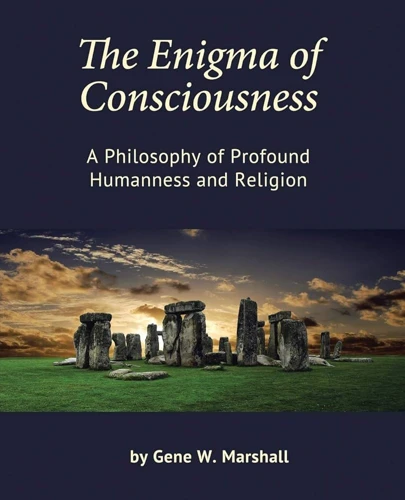
At the heart of both astrology and alchemy in the Renaissance were shared philosophical foundations that shaped their practices. One of these foundations was the doctrine of correspondences, which held that there were meaningful connections between different elements of the cosmos. This concept underscored the belief that celestial bodies and earthly elements were interconnected and mirrored each other, which had a profound impact on human existence. Another influential philosophical influence on astrology and alchemy was Hermeticism, an ancient spiritual and philosophical tradition associated with Hermes Trismegistus. Hermeticism emphasized the idea of “as above, so below,” suggesting that the microcosm of human experience reflected the macrocosm of the universe. These shared foundations provided a framework for astrologers and alchemists to explore the interplay between the celestial and earthly realms and seek to unlock the hidden wisdom of the universe. The impact of celestial observations on ancient navigation played a role in shaping these shared philosophical foundations, as ancient explorers navigated the seas using the stars as their guide, deepening their understanding of the interconnectedness of the cosmos.
2.1 The Doctrine of Correspondences
The Doctrine of Correspondences formed a fundamental aspect of the interconnectedness between astrology and alchemy during the Renaissance. This philosophical concept, derived from ancient wisdom and esoteric teachings, posited that there existed symbolic relationships and connections between different elements of the universe. According to this doctrine, every celestial body, element, plant, animal, and even human had corresponding qualities and correspondences with one another. For example, the Sun was associated with the element of Fire, representing energy, vitality, and creativity. Similarly, gold, which was believed to possess the Sun’s qualities, was considered the most perfect and incorruptible metal in alchemy. These correspondences were not limited to celestial bodies and metals but extended into various aspects of the natural world and human existence. By understanding and harnessing these correspondences, alchemists believed they could unlock the secrets of transmutation and the hidden qualities of materials. This concept also influenced astrology, with astrologers drawing connections between celestial bodies and their symbolic meanings as well as their impacts on human characteristics and events. The Doctrine of Correspondences played a vital role in bridging the gap between the microcosm of human life and the macrocosm of the universe, allowing practitioners to interpret and navigate the intricate relationships between celestial and earthly realms. To delve deeper into the impact of celestial observations on ancient navigation, refer to this link.
2.2 The Influence of Hermeticism
The influence of Hermeticism played a significant role in shaping the connection between astrology and alchemy during the Renaissance. Hermeticism, derived from the teachings of the ancient Egyptian god Thoth, was a philosophical and esoteric tradition that emphasized the unity of all things and the divine nature of the universe. It provided a framework for understanding the correspondence between the macrocosm (the celestial realm) and the microcosm (the earthly plane). This concept of correspondence was central to both astrology and alchemy, as practitioners sought to uncover the hidden relationships between celestial bodies and earthly substances. The Hermetic principle of “As above, so below” became a guiding principle for Renaissance scholars, highlighting the belief that the patterns and influences observed in the heavens were mirrored in the natural world. This philosophical outlook paved the way for the development of astrological and alchemical practices that sought to harness the power of the cosmos for spiritual and transformative purposes. The origins of astrological symbols can be traced back to ancient civilizations, such as the Mesopotamians and Egyptians, who assigned specific meanings to the celestial bodies. The influence of Hermeticism further bolstered the interconnected nature of astrology and alchemy, as practitioners sought to unravel the mysteries of the universe by delving into the depths of celestial symbolism and its relationship to earthly manifestations.
Astrology and Alchemy: Interconnected Practices
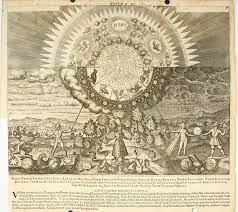
Astrology and alchemy in the Renaissance were not only closely intertwined philosophically but also interconnected in their practices. One of the main ways in which they intersected was through the influence of astrology on alchemical principles and processes. Astrology provided a framework for understanding the hidden correspondences between celestial bodies, elements, and earthly manifestations. Alchemists believed that these correspondences could be harnessed in their quest for transformation and transmutation. Additionally, astrological timing played a crucial role in alchemical processes. Alchemists would carefully consider the positions of the planets and their astrological associations to determine the most auspicious moments to perform specific alchemical operations. This synchronization between celestial movements and laboratory work was believed to enhance the potency and efficacy of their alchemical endeavors, as different planets were thought to govern different aspects of nature and alchemical substances. Thus, astrology and alchemy were deeply interconnected practices, each informing and enriching the other in the pursuit of esoteric knowledge and mystical transformation. The understanding of astrological symbols, with their origins dating back to ancient civilizations, was intrinsic to this integration.
3.1 Astrological Influences on Alchemical Principles
Astrology had a profound influence on the principles and practices of alchemy during the Renaissance. The belief that celestial bodies held sway over human affairs was integrated into alchemical philosophy, shaping its understanding of the natural world and the processes of transformation. Alchemists sought to harness the energies of the planets and the stars, aligning their experiments with specific astrological configurations to enhance their chances of success. The astrological associations of the planets and their corresponding metals played a significant role in alchemical operations. For example, gold was associated with the sun, while silver was linked to the moon. These planetary correspondences guided alchemists in their pursuit of transmutation, as they believed that aligning their work with the appropriate celestial influence would yield more potent results. The symbiotic relationship between astrology and alchemy ensured that both disciplines benefited from each other’s insights and methodologies. Alchemical texts often included astrological symbolism, referencing the influence of the planets on the various stages of the alchemical process. This intricate interplay between astrology and alchemy deepened the spiritual and philosophical dimensions of both practices, allowing Renaissance adepts to explore the interconnectedness of the macrocosm and the microcosm. The origins of astrological symbols can be traced back to ancient civilizations, where early astronomers assigned specific meanings to the celestial bodies. This rich symbolic framework provided alchemists with a language to express their ideas and insights, connecting the cosmic forces with earthly manifestations. The infusion of astrology into alchemical principles enriched the pursuit of transformation, blending the pragmatic and the mystical in a quest to unlock the secrets of the universe.
3.2 Astrological Timing in Alchemical Processes
Alchemy in the Renaissance embraced the idea that celestial energies could greatly influence the success of alchemical processes. This belief led alchemists to pay careful attention to astrological timing when conducting their experiments. The positioning of celestial bodies and the alignment of the zodiac signs were believed to have a direct impact on the outcome of alchemical transformations. For example, during specific planetary alignments, such as the conjunction or opposition of planets, alchemists believed that certain substances would be more receptive to transformation. The alignment of the planets was seen as a metaphorical representation of the harmony and balance required for successful transmutation. Alchemists carefully observed the movement of the stars and planets, consulting astrological charts and ephemerides to determine the opportune moments for conducting their alchemical experiments. They believed that by working in alignment with the celestial energies, they could harness the cosmic forces and enhance the efficacy of their alchemical processes. The use of astrological timing in alchemy allowed practitioners to tap into the cosmic rhythms and align their work with the ebb and flow of celestial influences. By incorporating astrological timing into their practices, alchemists sought to harmonize their efforts with the natural order, ultimately aiming to achieve the elusive goal of transmutation. The origins of astrological symbols can be traced back to ancient civilizations, which assigned specific meanings to celestial bodies as they sought to understand their influence on earthly affairs, giving further weight to the belief in the power of astrology and its connection to alchemical processes in the Renaissance.
The Role of Celestial Bodies and Elements
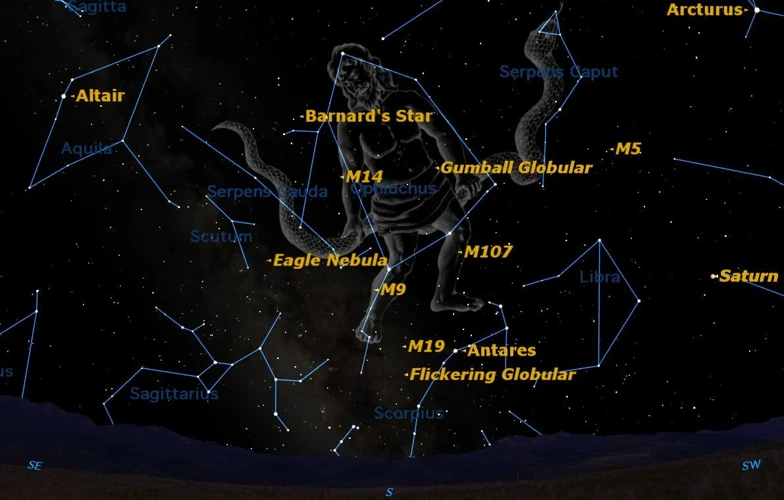
In the realms of astrology and alchemy, celestial bodies and elements play a vital role in the understanding of the universe and the transformation of matter. The four elements – Earth, Air, Fire, and Water, each associated with specific qualities and properties – form the building blocks of both astrology and alchemy. These elements were believed to correspond to different aspects of human nature and the world around us. Additionally, the celestial bodies, such as the sun, moon, and planets, were seen as powerful cosmic forces influencing life on Earth. The origins of astrological symbols can be traced back to ancient civilizations, where specific meanings were assigned to these celestial bodies. The alignment and positioning of these celestial bodies were believed to have a profound impact on individual lives and the outcome of alchemical processes. It was through the understanding and manipulation of these celestial forces and elemental properties that astrologers and alchemists sought to unlock the secrets of the universe and achieve their transformative goals.
4.1 The Four Elements: Earth, Air, Fire, and Water
The Four Elements – Earth, Air, Fire, and Water, played a significant role in both astrology and alchemy during the Renaissance. These elements were believed to be the fundamental building blocks of the universe, each with its own unique characteristics and associations. Understanding the qualities of these elements was crucial in interpreting astrological charts and performing alchemical experiments.
The Earth element, symbolized by the solidity and stability of the ground beneath our feet, was associated with practicality, grounding, and material wealth. It represented the physical realm and was often connected to the zodiac signs of Taurus, Virgo, and Capricorn.
Air, in contrast, represented intellect, communication, and the power of the mind. Linked to the zodiac signs Gemini, Libra, and Aquarius, it symbolized freedom, adaptability, and the ability to think abstractly.
Fire embodied passion, transformation, and the spark of life. This element was associated with creativity, intuition, and the energetic force that drives action. It corresponded to the zodiac signs Aries, Leo, and Sagittarius.
Water, lastly, represented emotions, intuition, and the subconscious. It was associated with the depths of the human psyche and the ebb and flow of feelings. The zodiac signs Cancer, Scorpio, and Pisces were linked to this element.
These elements were not only symbolic but also had practical implications in alchemical processes. Alchemists believed that by harnessing the transformative powers present in each element, they could transmute base metals into gold, create elixirs of immortality, and achieve spiritual enlightenment. The interplay between these elements was seen as vital for achieving balance and harmony in both the material and the spiritual realms. Understanding the symbolism and properties of the four elements allowed practitioners to navigate the complexities of astrology and alchemy, unlocking their potential for personal and cosmic transformation. To learn more about the origins of astrological symbols and their significance, you can refer to this link.
4.2 Planetary Associations and Alchemical Operations
Planetary associations and alchemical operations were intricately linked in the practice of alchemy during the Renaissance. Alchemists believed that each planet corresponded to specific metals, elements, and qualities, and understanding these associations was crucial in their quest for transformation and transmutation. Here are some key planetary associations and their corresponding alchemical operations:
1. Sun: The Sun was associated with gold, representing the pinnacle of alchemical achievement. It symbolized the divine essence within metals and the ultimate goal of transmutation. Alchemists sought to harness the solar energy and incorporate it into their operations to achieve the perfection represented by gold.
2. Moon: The Moon was associated with silver, representing purity and reflection. Alchemists utilized lunar influences for processes involving purification and refining, aiming to extract the essence of materials and eliminate impurities.
3. Mars: Mars was associated with iron, symbolizing strength and assertiveness. Alchemical operations influenced by Mars involved heating, burning, and calcination, as they sought to increase the potency and power of substances.
4. Venus: Venus was associated with copper, representing beauty and love. Alchemy influenced by Venus focused on processes that enhanced the aesthetic qualities of materials and promoted the harmonization of elements.
5. Mercury: Mercury was associated with mercury itself, symbolizing transformation and volatility. Alchemical operations involving Mercury often focused on distillation and separating substances into their essential components.
6. Jupiter: Jupiter was associated with tin, symbolizing expansion and growth. Alchemists utilized the energies of Jupiter to facilitate processes of crystallization and solidification.
7. Saturn: Saturn was associated with lead, representing the material world’s limitations and the necessity for transformation. Alchemical operations influenced by Saturn involved dissolution and putrefaction, breaking down substances to their essential components and initiating the process of transformation.
Understanding the planetary associations and their related alchemical operations allowed practitioners to harness the energies and qualities of each planet in their quest for transmutation and the discovery of the Philosopher’s Stone. By aligning themselves with the movements of the celestial bodies, alchemists believed they could unlock the hidden secrets of matter and attain spiritual enlightenment.
The Alchemical Zodiac
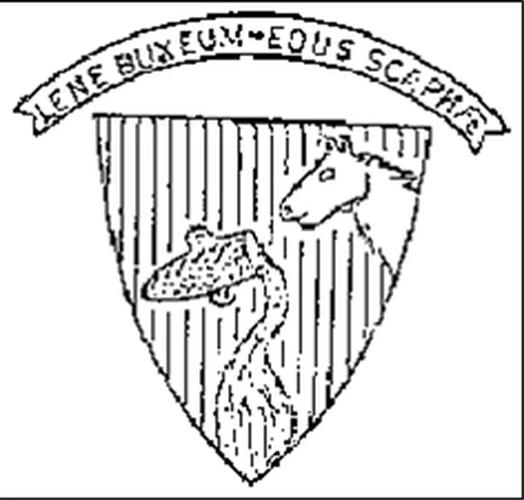
The Alchemical Zodiac played a significant role in the practice of alchemy during the Renaissance. It was believed that each zodiac sign corresponded to a specific alchemical process or transformation, symbolizing the journey of the alchemist’s own spiritual and material transmutations. For example, Aries represented the process of calcination, the intense heating and burning away of impurities. Taurus symbolized coagulation, the coming together and solidification of different elements. Gemini represented distillation, the process of separating substances through vaporization and condensation. Each zodiac sign held its own symbolic meaning and was associated with specific alchemical operations and goals. This intricate connection between the celestial zodiac and alchemical processes added a layer of mystical depth to the practice of alchemy, reflecting the belief that the movement of the planets and stars influenced the transformation of matter both within and without.
5.1 The Zodiac Signs and their Symbolic Meanings
The Zodiac Signs and their Symbolic Meanings play a crucial role in the study of astrology and alchemy. In astrology, the Zodiac is divided into twelve signs, each representing different personality traits and characteristics. Each sign is associated with a specific element: Aries, Leo, and Sagittarius represent fire; Taurus, Virgo, and Capricorn represent earth; Gemini, Libra, and Aquarius represent air; and Cancer, Scorpio, and Pisces represent water. These elements provide insight into the fundamental qualities of each sign.
Aries, the first sign of the Zodiac, is characterized by its fiery and assertive nature, representing courage and leadership. Taurus symbolizes stability, endurance, and the appreciation of material possessions. Gemini, known for its intellectual curiosity, represents communication and adaptability.
Cancers are known for their nurturing and emotional nature, representing family and home. Leo, ruled by the Sun, embodies creativity, passion, and the desire for recognition. Virgo, the sign of precision and practicality, reflects a meticulous nature and attention to detail.
Libra, symbolized by the scales, represents balance, harmony, and diplomacy. Scorpio, associated with intensity and transformation, represents desires, secrets, and the mysteries of life. Sagittarius, the adventurer of the Zodiac, embodies exploration, philosophy, and a love for freedom.
Capricorn, represented by the goat, signifies ambition, discipline, and determination. Aquarius is known for its originality, independence, and humanitarian ideals. Lastly, Pisces symbolizes intuition, spirituality, and compassion. Understanding the symbolic meanings of the Zodiac signs allows astrologers and alchemists to delve deeper into the mysteries of the human psyche and the interconnectedness of the cosmos.
5.2 The Alchemical Processes of the Zodiac
The alchemical processes of the Zodiac delve into the symbolic meanings and transformative qualities associated with each of the twelve Zodiac signs. In alchemy, the Zodiac is seen as a map of the spiritual journey and the progression of the alchemical work. Each sign represents different elements and archetypal energies that correspond to specific alchemical operations. Aries, for example, is associated with the element of fire and represents the initial stages of purification and calcination. Taurus, on the other hand, symbolizes stability and fertility, corresponding to the alchemical process of fixation. Gemini represents duality and the integration of opposites, reflecting the alchemical process of conjunction. Each Zodiac sign offers unique insights into the alchemical path, guiding the seeker through various stages of transformation. For instance, Cancer corresponds to the process of dissolution, representing the breaking down of old structures and emotions. Leo, associated with the Sun, symbolizes the process of distillation, where the essential and pure aspects of the self are refined. The following signs, Virgo, Libra, Scorpio, Sagittarius, Capricorn, Aquarius, and Pisces, each contribute to the alchemical journey with their own distinct processes and qualities. The alchemical processes of the Zodiac intertwine celestial energies and alchemical symbolism, guiding practitioners towards inner transformation and spiritual enlightenment.
The Influence of Astrology and Alchemy in the Arts
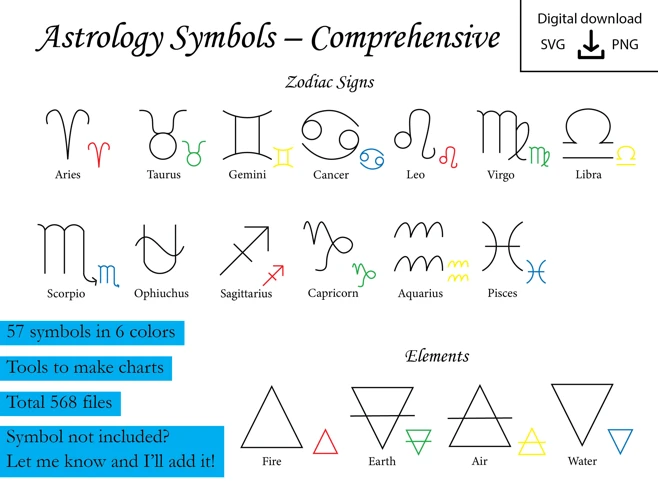
The influence of astrology and alchemy extended beyond their philosophical and scientific realms to the realm of arts during the Renaissance. In paintings, astrology played a significant role, with artists incorporating astrological symbols and celestial bodies to convey deeper meanings. For example, a painting might depict the position of the planets at a specific moment to symbolize the influence of the stars on human destiny. Alchemy, with its emphasis on transformation and symbolism, also inspired writers and poets to incorporate alchemical imagery in their works. The alchemical processes of transmutation were often used as metaphors for personal growth and spiritual transformation. This integration of astrology and alchemy in the arts allowed artists and writers to tap into the mystical and fantastical elements associated with these disciplines, creating works that conveyed a sense of mystery and hidden meaning.
6.1 Astrology in Renaissance Paintings
Astrology played a significant role in Renaissance paintings, with artists incorporating astrological symbolism to convey deeper meanings and messages. In these artworks, celestial bodies and astrological signs were often depicted to represent different aspects of human existence and the cosmic order. The use of astrology in paintings allowed artists to explore the relationship between the heavens and earthly life, bridging the gap between the divine and the mundane. One notable example is Sandro Botticelli’s iconic painting “Primavera,” where various celestial figures and influences are present. The figure of Venus, associated with love and beauty, is positioned under a canopy of stars, indicating her connection to the celestial realm. The zodiac signs are also subtly woven into the composition, symbolizing the cyclical nature of time and the forces that govern human destiny. By employing astrology in their artworks, Renaissance painters sought to elevate their creations beyond mere visual representations, infusing them with a deeper sense of meaning and spiritual insight. The incorporation of astrological elements added layers of complexity and symbolism to the paintings, inviting viewers to contemplate the mysteries of the universe and their own place within it.
6.2 Alchemical Symbolism in Literature and Poetry
Throughout the Renaissance, alchemical symbolism found its way into literature and poetry, providing inspiration for authors and poets seeking to convey deeper meanings and truths. Poems and literary works infused with alchemical symbolism often utilized imagery of transformation, purification, and the quest for spiritual enlightenment. One notable example is Dante Alighieri’s divine comedy, “The Divine Comedy,” where he explores the journey of the soul through hell, purgatory, and heaven, drawing parallels to the alchemical process of transmutation and spiritual growth. In this epic poem, Dante’s portrayal of the different realms and their inhabitants reflects the alchemical stages of nigredo (blackening), albedo (whitening), and rubedo (reddening) as the soul ascends towards divine realization. Another renowned figure that incorporated alchemical symbolism into his literary works was William Shakespeare. He often used alchemical metaphors and symbolism as a means to convey profound themes in his plays. In “Romeo and Juliet,” the characters’ love is likened to the transformative properties of alchemy, where their union has the potential to heal the longstanding feud between their families. This blending of alchemical symbolism with literary and poetic works not only showcased the influence of alchemy during the Renaissance but also allowed for the exploration of complex philosophical concepts in a more accessible and imaginative way.
The Rise and Decline of Astrology and Alchemy
The rise of astrology and alchemy during the Renaissance eventually gave way to their decline in the following centuries. The shift in scientific paradigms played a significant role in this decline. As the scientific method gained prominence and empirical evidence became the gold standard for knowledge, astrology and alchemy were viewed with skepticism and seen as pseudoscience. The rise of astronomy as a separate and more rigorous discipline further marginalized astrology. Additionally, alchemy’s failure to produce significant and tangible results in terms of transmuting metals or discovering the Philosopher’s Stone led to a loss of credibility. Despite their decline, astrology and alchemy continued to have a lasting cultural impact. Today, there is a renewed interest in these practices, albeit often approached with a more symbolic or psychological lens. Modern perspectives on astrology and alchemy recognize their historical significance and the profound influence they had on the development of science, philosophy, and the arts.
7.1 The Shift in Scientific Paradigms
In the Renaissance, the prevailing belief in the interconnectedness of astrology and alchemy began to wane with the advent of a shift in scientific paradigms. This shift was characterized by the emergence of the scientific method and a more empirical approach to understanding the natural world. As a result, the once-revered practices of astrology and alchemy were increasingly dismissed as pseudoscience or relegated to the realm of superstition. The scientific community began to prioritize observation, experimentation, and evidence-based reasoning over the speculative and mystical nature of astrology and alchemy. This marked a significant departure from the Renaissance perspective that saw the cosmos and earthly elements as intimately linked. The rise of the Copernican model, which challenged the geocentric view of the universe, further contributed to the discrediting of astrology’s influence on human affairs. While astrology and alchemy lost favor within the scientific community, their legacy endured in various forms. Astrology, for instance, remained popular among the general population and continued to be practiced as a form of divination and entertainment. Alchemy also left its mark on the development of modern chemistry, with many of its principles and practices laying the groundwork for the scientific advancements in the field. The shift in scientific paradigms ultimately led to a divergence between mainstream scientific thought and the persisting belief in the influence of cosmic forces on human existence. Despite their decline in scientific acceptance, astrology and alchemy continue to capture the curiosity and imagination of individuals interested in exploring the mystical and symbolic aspects of the universe.
7.2 Modern Perspectives on Astrology and Alchemy
Modern perspectives on astrology and alchemy vary greatly, reflecting the diverse beliefs and opinions surrounding these ancient practices. Some individuals embrace astrology and view it as a valuable tool for self-reflection, personal growth, and understanding the rhythms of the universe. They see astrology as a way to gain insight into their own personalities, relationships, and life events. Astrology enthusiasts often consult horoscopes, birth charts, and astrological readings to guide their decisions and navigate life’s challenges. They find meaning in the symbolism of celestial bodies and the interconnectedness of the cosmos. On the other hand, skeptics and critics argue that astrology lacks scientific evidence and dismiss it as pseudoscience or mere superstition. They advocate for a purely rational and empirical approach to understanding the world. Alchemy also experiences a similar divide in modern perspectives. Some view alchemy as a precursor to modern chemistry and appreciate its historical significance in the development of scientific thought. They recognize the alchemical quest for transmutation as a metaphor for personal transformation and spiritual growth. Others see alchemy as a relic of a bygone era, dismissing its mystical and metaphysical aspects as unscientific and outdated. However, it is worth noting that in recent years, there has been a resurgence of interest in both astrology and alchemy, with individuals seeking alternative perspectives, spiritual guidance, and a deeper connection to the mysteries of life. Whether seen as historically significant, personally meaningful, or dismissed as pseudoscience, astrology and alchemy continue to spark intrigue and inspire contemplation in the modern world.
Conclusion
In conclusion, the Renaissance era witnessed a profound interconnection between astrology and alchemy, two ancient practices that sought to unlock the mysteries of the universe. During this period, astrologers and alchemists shared a common philosophical foundation, rooted in the doctrines of correspondences and influenced by Hermeticism. Astrology played a significant role in shaping alchemical principles and timing, as practitioners believed that the positions and movements of celestial bodies influenced the success of alchemical processes. The celestial bodies and the four elements—earth, air, fire, and water—were intricately woven into the fabric of both astrology and alchemy, with each element and planet corresponding to specific alchemical operations. The intricate relationship between the zodiac signs and alchemical processes further exemplified the fusion of these disciplines. Astrology and alchemy also left an indelible mark on the arts, with Renaissance painters incorporating astrological symbolism into their works, and poets and writers drawing inspiration from alchemical allegories. However, as the scientific paradigm shifted, astrology and alchemy declined in mainstream acceptance. Despite this, the influence of astrology and alchemy can still be seen in modern perspectives, with many individuals finding personal meaning and guidance through astrology, and alchemy continuing to inspire spiritual and psychological transformation. The Renaissance era served as a crucial bridge between the ancient wisdom of astrology and alchemy and the evolving scientific worldview, leaving a lasting legacy that continues to provoke curiosity and fascination.
Frequently Asked Questions
1. What role did astrology play in Renaissance society?
Astrology played a significant role in Renaissance society as it was believed to offer insights into personalities, predict events, and guide decision-making. It was widely practiced by scholars, rulers, and individuals seeking guidance in various aspects of life.
2. How did alchemy contribute to scientific advancements during the Renaissance?
Alchemy, despite its mystical nature, laid the groundwork for scientific advancements during the Renaissance. Alchemists developed experimental methods, laboratory equipment, and chemical processes that later influenced the development of modern chemistry.
3. Did the Renaissance thinkers fully embrace astrology and alchemy?
While astrology and alchemy were widely embraced during the Renaissance, there were also skeptics and critics. Some intellectuals questioned their legitimacy and sought to separate them from mainstream scientific and philosophical pursuits.
4. What were the major influences on Renaissance astrology and alchemy?
Ancient civilizations, such as the Mesopotamians and Egyptians, greatly influenced Renaissance astrology and alchemy. Hermeticism, a philosophical and mystical tradition, also played a significant role in shaping these esoteric disciplines.
5. How did the doctrine of correspondences influence astrology and alchemy?
The doctrine of correspondences, derived from ancient traditions, posited that there were symbolic connections between celestial bodies, elements, and earthly phenomena. This belief heavily influenced both astrology and alchemy, emphasizing the interconnectedness of the macrocosm and microcosm.
6. What were the four elements in alchemy and their significance?
The four elements in alchemy were earth, air, fire, and water. Each element held symbolic meanings and corresponded to different qualities, such as solidity (earth), inspiration (air), transformation (fire), and fluidity (water).
7. How did the zodiac signs influence alchemical processes?
Each zodiac sign had its own symbolic associations and character traits. Alchemists believed that these attributes influenced the specific properties and transformations of different substances, guiding their work and experimentation.
8. Can astrology and alchemy be scientifically explained today?
From a scientific perspective, astrology and alchemy are considered pseudosciences. While they played important historical roles, their principles and claims cannot be validated or explained through modern scientific methods.
9. Do astrology and alchemy still have any relevance in modern society?
Astrology still maintains a significant cultural following, with individuals seeking personal guidance and entertainment. Alchemy, on the other hand, has evolved into the field of chemistry, leaving behind its mystical aspects.
10. How did astrology and alchemy influence artistic expressions during the Renaissance?
Astrology and alchemy heavily influenced various forms of art during the Renaissance. Astrological symbols and concepts were incorporated into paintings and sculptures, while alchemical symbolism found its way into literature and poetry, adding layers of meaning and mystery to artistic creations.

